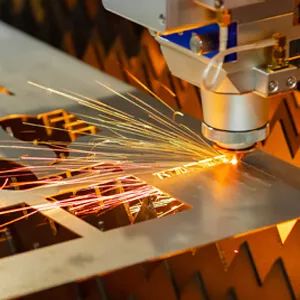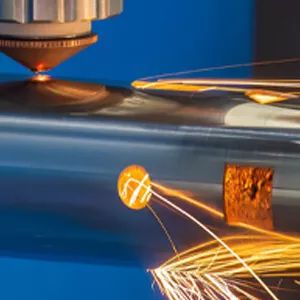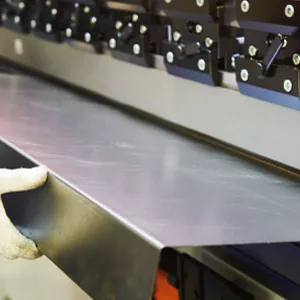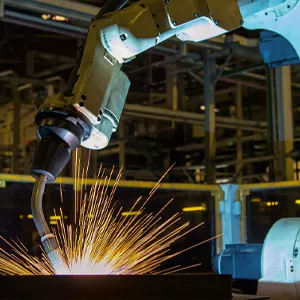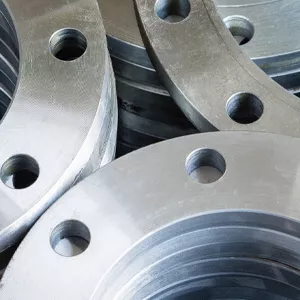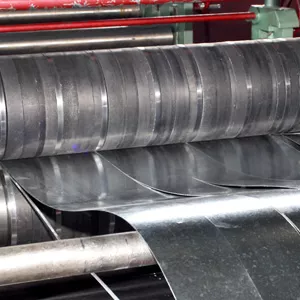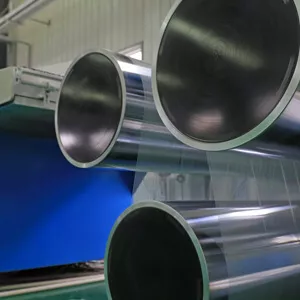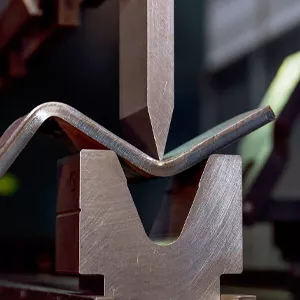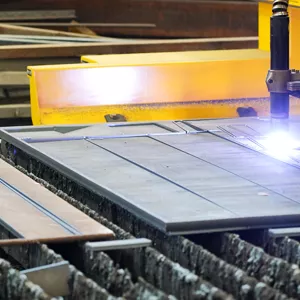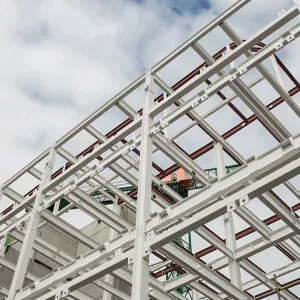
Profile laser cutting is a modern technology that ensures precision and efficiency in industrial production. Its ability to process different materials such as metal and wood makes it a popular choice in the automotive, construction, and furniture industries. This method is notable for its flexibility, low waste rate, and fast production process, optimizing business processes by easily bringing complex designs to life.
What is Profile Laser Cutting?
Profile laser cutting is a modern technology used for cutting and shaping profiles made of metal and other materials with high precision. This method is carried out by using laser beams as an intense energy source. Laser cutting allows profiles to be cut according to desired dimensions and designs. Profile laser cutting, widely used in construction, automotive, furniture, machinery production, and many other industries, is a faster, more efficient, and cost-effective alternative compared to other cutting methods.
Profile laser cutting can be applied not only to metal profiles but also to different materials such as plastic, wood, and acrylic. This flexibility has made laser cutting technology an indispensable tool in many sectors. The laser beam cuts the material by melting or vaporizing it at high temperatures, resulting in a smooth and clean cutting surface.
How is the Profile Laser Cutting Process Carried Out?
The profile laser cutting process is carried out using advanced technology machines and specialized software. The basic steps of this process are as follows:
- Design and Programming: Before starting the profile laser cutting process, the design of the profile to be cut is created. A digital model is created using CAD (Computer-Aided Design) software. This model is transferred to the laser cutting machine, and necessary commands for cutting are generated using CAM (Computer-Aided Manufacturing) software.
- Material Preparation: The profile to be cut is placed in the laser cutting machine. Securing the profile is extremely important to prevent slipping during the cutting process and to increase precision.
- Laser Cutting Process: The laser beam is used as a high-intensity energy source. This beam is focused on the profile surface, carrying out the cutting process by melting or vaporizing the material. During cutting, the laser beam moves to cut the profile to the desired shape.
- Gas Usage: Auxiliary gases (e.g., oxygen, nitrogen, or argon) are generally used during profile laser cutting. These gases keep the cutting surface clean, prevent material oxidation, and improve cutting quality.
- Post-Cutting Processes: After cutting is completed, burrs on the profile are cleaned, and the surface quality is checked. If necessary, surfaces are polished or other processes are applied.
These steps ensure the profile laser cutting process is carried out quickly and with high precision. Laser cutting machines stand out with their ability to easily process complex designs.
What Materials Can Profile Laser Cutting Be Used On?
Profile laser cutting can be used on a wide range of materials. These materials include:
- Metals:
- Carbon steel
- Stainless steel
- Aluminum
- Copper
- Brass
- Plastic Materials:
- Acrylic
- PVC
- Polycarbonate
- Wood:
- MDF
- Plywood
- Solid wood types
- Other Materials:
- Rubber
- Foam
The suitability of these materials for laser cutting depends on the type of laser and the settings used during cutting. For example, CO2 lasers are generally preferred for cutting wood and plastic materials, while fiber lasers are more effective for metal cutting.
Profile laser cutting can operate at different energy levels depending on the type and thickness of the material, ensuring optimal results for each material type. Additionally, thanks to laser cutting technology, both thin and thick materials can be processed with precision.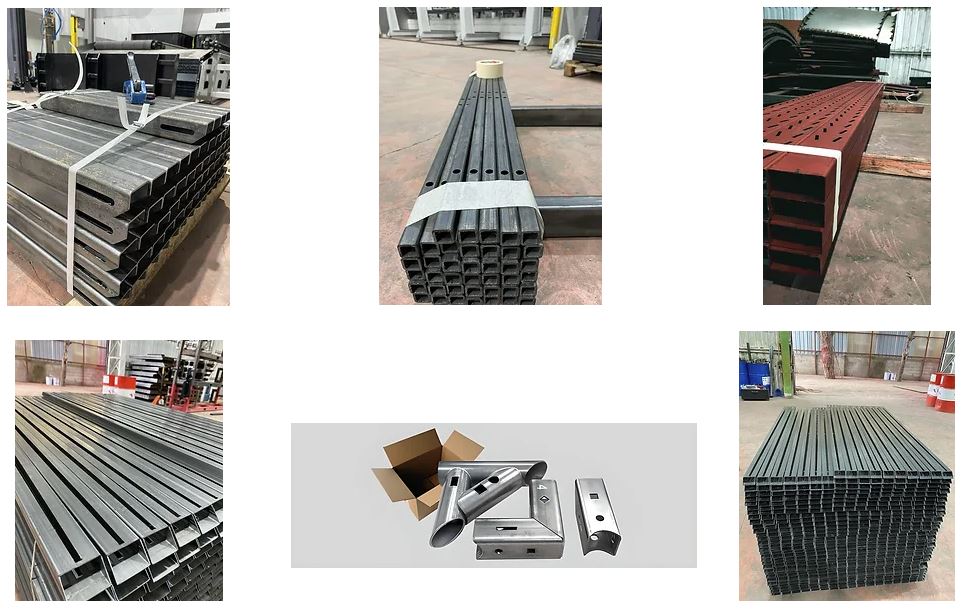
What Errors Can Occur During the Profile Laser Cutting Process and How Can They Be Prevented?
The profile laser cutting process is quite precise, and some errors may occur. However, various methods are available to prevent these errors. Here are common errors encountered during laser cutting and their solutions:
- Problem of Deburring: Burrs or rough edges may form on the profile after cutting. This usually stems from incorrect laser settings. To prevent this issue:
- The focus settings of the laser beam must be accurately adjusted.
- Cutting speed should be adjusted according to the type of material.
- Burn Marks: Burn marks may form on the material's surface. This can result from the laser's energy level being too high. To solve this:
- The laser power and cutting speed should be optimized.
- Proper use of auxiliary gases should be ensured.
- Cutting Errors and Slanted Cuts: Slanted or incorrect cuts may occur on the profile during laser cutting. These errors are usually due to improper placement of the material or malfunctioning machine calibration. To prevent such errors:
- Materials should be correctly secured before cutting.
- The laser cutting machine should undergo regular maintenance and calibration.
- Oxidation Issues: Oxidation may occur during cutting, especially with metal materials. To prevent this issue:
- Oxidation-preventive gases like nitrogen can be used.
- Design Errors: Errors in digital designs prepared for laser cutting can cause problems during cutting. To prevent this issue, designs should be carefully reviewed before the cutting process.
What Types of Gases Are Used During the Profile Laser Cutting Process and What Are Their Functions?
Gases used during the profile laser cutting process play an important role in enhancing cutting quality and protecting the material surface. Here are the gas types commonly used during laser cutting and their functions:
- Oxygen (O2): Oxygen is used in the cutting of materials such as carbon steel. It increases cutting speed by creating high heat. However, oxidation may occur on the material when using oxygen.
- Nitrogen (N2): Nitrogen is preferred for cutting metals such as stainless steel and aluminum. Nitrogen prevents oxidation, ensuring the cutting surface is clean and smooth.
- Argon (Ar): Argon is used less frequently but is employed for special processes and some alloys. It forms a protective barrier on the surface for precise cutting.
- Air: In some cases, compressed air can be used to reduce costs. However, air generally does not enhance cutting quality as much as nitrogen or oxygen.
The selection of gas depends on the type, thickness, and desired surface quality of the material to be cut. Proper gas selection is crucial for the success of the profile laser cutting process.
What Are the Minimum and Maximum Size Limits for Profile Laser Cutting?
Profile laser cutting processes generally vary depending on the size of the material and the capacity of the cutting machine. Modern laser cutting machines are designed to precisely cut profiles of various sizes. Minimum and maximum size limits depend on the following factors:
- Material Thickness: Laser cutting machines can generally cut materials with thicknesses ranging from 0.5 mm to 25 mm. Special equipment may be needed for thinner or thicker materials.
- Size and Length: Standard laser cutting machines can cut profiles up to 6 meters in length. However, specially designed machines are available for longer or wider profiles.
- Cutting Area: Most laser cutting machines have a standard cutting area of about 1.5 meters x 3 meters. Industrial-scale machines are used for larger projects.
The flexibility offered by profile laser cutting technology is also noteworthy for its ability to accommodate various sizes and designs. This feature allows for project customization.
Which Sectors Benefit from Profile Laser Cutting Service?
Profile laser cutting has become a fundamental process in many sectors. It offers an indispensable solution for processes requiring high precision and speed. The main sectors benefiting from profile laser cutting services are as follows:
- Automotive Industry: Provides both speed and precision in the production of vehicle parts.
- Architecture and Construction: Widely used for producing decorative elements and building materials.
- Furniture Industry: Preferred for creating special designs from metal and wood materials.
- Machinery Manufacturing: Offers fast and precise solutions in the production of industrial machinery using profile laser cutting technology.
- Defense Industry: Plays an important role in the production of parts requiring high precision.
The versatility of this technology helps companies optimize their production processes and become more competitive.
How Is Waste Management Conducted During the Profile Laser Cutting Process?
Profile laser cutting generates less waste compared to other cutting technologies. However, effectively managing the resulting waste is important for preserving environmental sustainability. Points to consider regarding waste management:
- Metal Waste Recycling: Metal waste generated after cutting can be sent to recycling facilities.
- Dust and Particle Filtration: It is important to filter dust and particles generated during the cutting process. This ensures both environmental protection and meeting industrial hygiene standards.
- Energy Efficiency: Efficient use of laser cutting machines saves energy and reduces carbon footprint.
- Cutting Optimization: Proper cutting plans should be made to utilize materials with maximum efficiency.
With correct management strategies, it is possible to minimize waste generated from profile laser cutting processes.

 TR
TR

